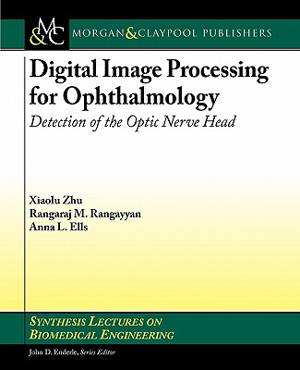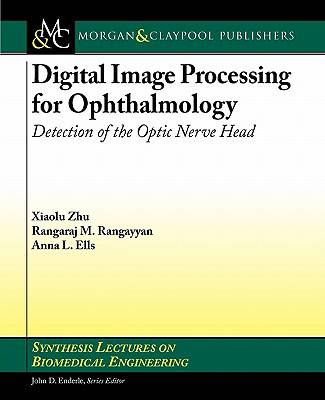
- Retrait gratuit dans votre magasin Club
- 7.000.000 titres dans notre catalogue
- Payer en toute sécurité
- Toujours un magasin près de chez vous
- Retrait gratuit dans votre magasin Club
- 7.000.000 titres dans notre catalogue
- Payer en toute sécurité
- Toujours un magasin près de chez vous
Digital Image Processing for Ophthalmology: Detection of the Optic Nerve Head
Detection of the Optic Nerve Head
Xiaolu Zhu
50,45 €
Description
Fundus images of the retina are color images of the eye taken by specially designed digital cameras. Ophthalmologists rely on fundus images to diagnose various diseases that affect the eye, such as diabetic retinopathy and retinopathy of prematurity. A crucial preliminary step in the analysis of retinal images is the identification and localization of important anatomical structures, such as the optic nerve head (ONH), the macula, and the major vascular arcades. Identification of the ONH is an important initial step in the detection and analysis of the anatomical structures and pathological features in the retina. Different types of retinal pathology may be detected and analyzed via the application of appropriately designed techniques of digital image processing and pattern recognition. Computer-aided analysis of retinal images has the potential to facilitate quantitative and objective analysis of retinal lesions and abnormalities. Accurate identification and localization of retinal features and lesions could contribute to improved diagnosis, treatment, and management of retinopathy. This book presents an introduction to diagnostic imaging of the retina and an overview of image processing techniques for ophthalmology. In particular, digital image processing algorithms and pattern analysis techniques for the detection of the ONH are described. In fundus images, the ONH usually appears as a bright region, white or yellow in color, and is indicated as the convergent area of the network of blood vessels. Use of the geometrical and intensity characteristics of the ONH, as well as the property that the ONH represents the location of entrance of the blood vessels and the optic nerve into the retina, is demonstrated in developing the methods. The image processing techniques described in the book include morphological filters for preprocessing fundus images, filters for edge detection, the Hough transform for the detection of lines and circles, Gabor filters to detect the blood vessels, and phase portrait analysis for the detection of convergent or node-like patterns. Illustrations of application of the methods to fundus images from two publicly available databases are presented, in terms of locating the center and the boundary of the ONH. Methods for quantitative evaluation of the results of detection of the ONH using measures of overlap and free-response receiver operating characteristics are also described. Table of Contents: Introduction / Computer-aided Analysis of Images of the Retina / Detection of Geometrical Patterns / Datasets and Experimental Setup / Detection of the\\Optic Nerve Head\\Using the Hough Transform / Detection of the\\Optic Nerve Head\\Using Phase Portraits / Concluding Remarks
Spécifications
Parties prenantes
- Auteur(s) :
- Editeur:
Contenu
- Nombre de pages :
- 90
- Langue:
- Anglais
- Collection :
Caractéristiques
- EAN:
- 9781608456314
- Date de parution :
- 01-08-11
- Format:
- Livre broché
- Format numérique:
- Trade paperback (VS)
- Dimensions :
- 190 mm x 235 mm
- Poids :
- 199 g







